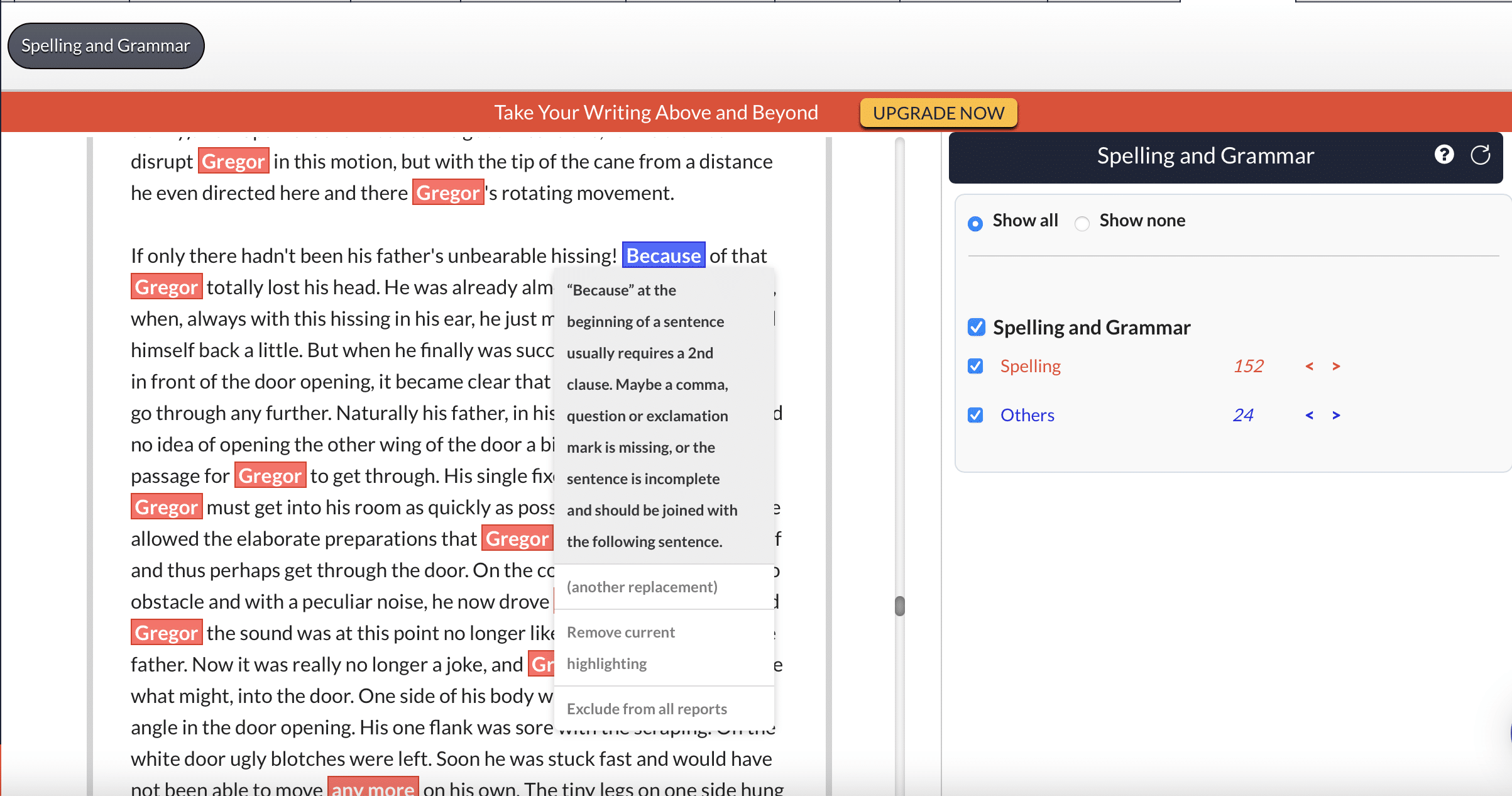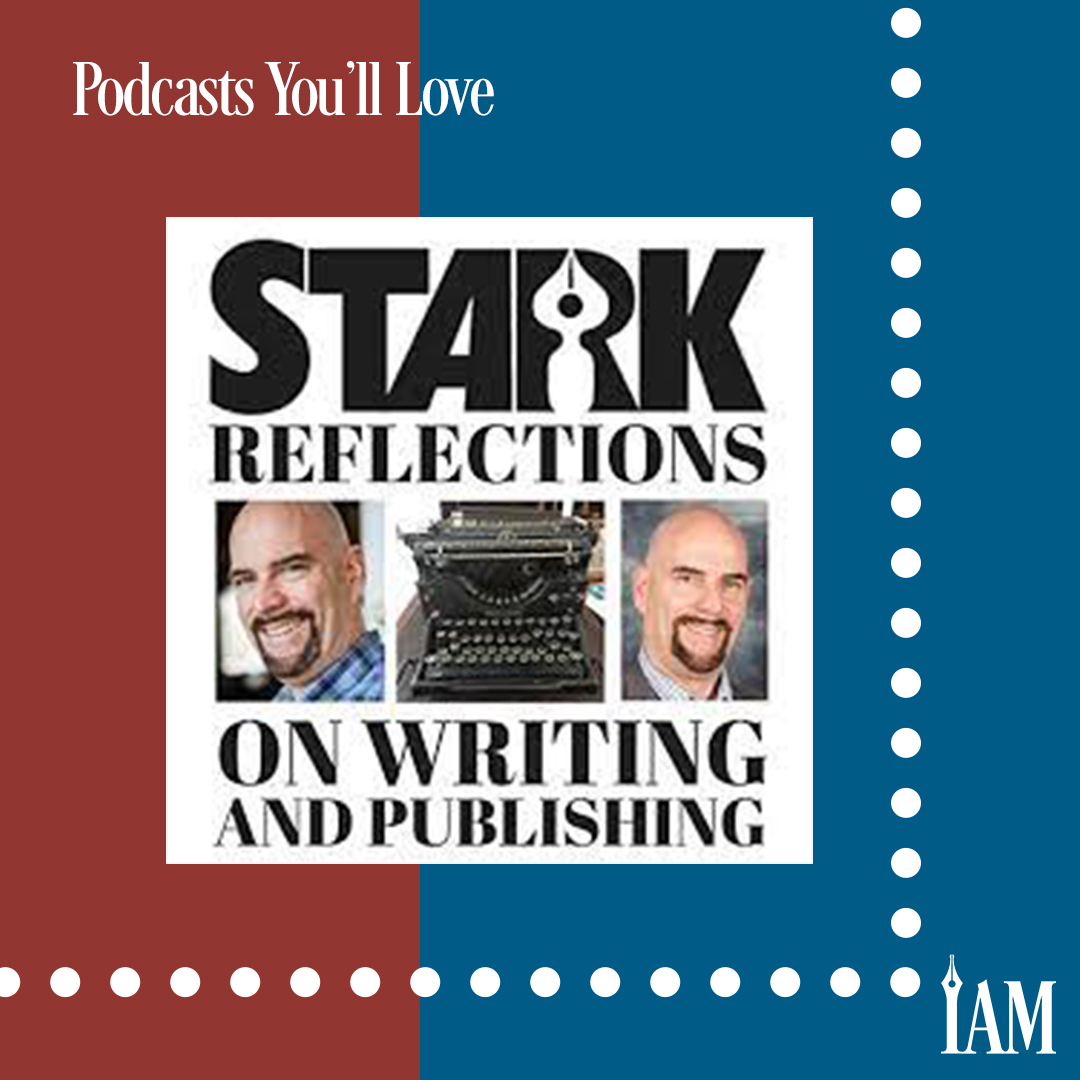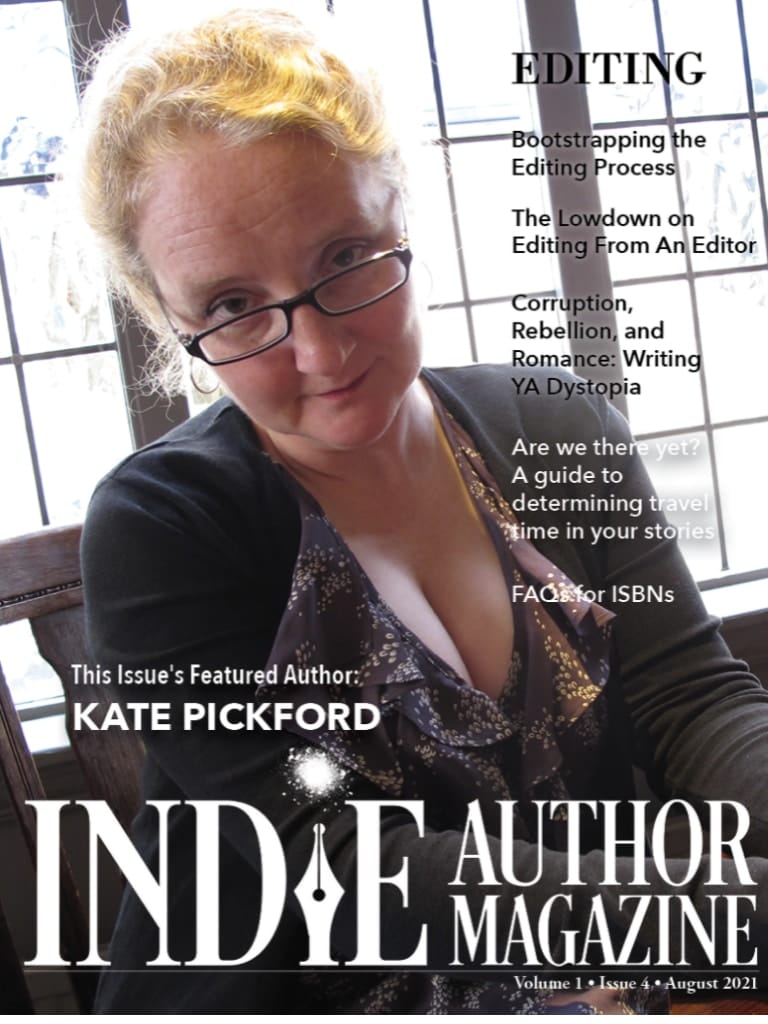Partner Spotlight
|
|
Find Your Perfect Editor: A Guide for Indie Authors
Or is it salvation?
The right editor will be your partner, helping polish your words so your story shines. But how do you know if an editor is right? A highly-acclaimed editor of techno-thrillers may be completely the wrong choice to edit your Regency Romance.
Finding the editor that’s right for you is critical, and we offer some guidance on what to look for. If money is tight, it doesn’t mean you should settle for the wrong choice. We suggest ways to edit on a budget, including an assessment of the tools available to help you self-edit and strengthen your work.
With an eye to marketing, this month we look at what makes an ad stand out, and how to leverage the power of Goodreads to boost your author profile and sell more books.
Add in some words of wisdom from our cover author and developmental editor Kate Pickford, you have a productive way to pass the time until your editor returns your manuscript.
Just think of that red ink as love notes to your story!

ISBNs in Self-Publishing: Essential Guide for Authors
What you need to know about ISBNs to make the right choices for your business
There’s much to learn about self-publishing, and one aspect to understand is the role of the ISBN (International Standard Book Number). Here’s an overview of what they’re for, when you need them, and how to get them.
What is an ISBN?
Essentially, it’s your book’s phone number. It’s a unique thirteen digit code that allows anyone, anywhere in the world, to source the exact version of the book they want to purchase. It links metadata that includes the book’s title, its publisher, the edition, the format (paperback, hardback, etc.), the country of origin, and the language it is written in.
Despite it being repeated in author circles regularly, ISBNs are not linked to the book copyright, nor do they convey any legal protection. It is merely an identifier, a product code, used internationally to make book buying simpler.
When do I need them?
The International ISBN Agency, the global coordinators for the ISBN standards, state that text-based products, available to the public, are eligible for ISBNs. You need a unique ISBN for each format in which you plan to publish your book, e.g., paperbacks, e-books, audiobooks, hardbacks.
In the case of proprietary format e-books that can only be bought through one provider (e.g. Kindle via Amazon), there is only one source of supply, so an ISBN is not required. However, there are a couple of benefits to assigning one anyway.
Firstly, it’s used by publishers, booksellers, and libraries for ordering, listing, and stock control purposes. Registering an ISBN for each format of your book means that each format will be listed, for free, in trade directories such as the Books In Print catalog.
Secondly, non-proprietary e-book formats (e.g. EPUB) require an ISBN. OverDrive—one of the main distributors of digital content for libraries worldwide—won’t list e-books without an ISBN.
It’s worth noting that the use of libraries for digitized books has grown year on year. OverDrive reported a massive 430 million e-books and audiobooks borrowed in 2020. If you don’t have an ISBN (free or your own) for your digital products, you could be missing out on a distribution channel—not only for the royalties, but also for the increased visibility.
How much do they cost?
For sourcing your ISBNs, you have two options: free via some of the distributing platforms (i.e. Amazon, Draft2Digital) or buying your own.
The benefit of the free option is exactly that, it’s free. If you’re on a budget, then this might be your preferred route, and you can always switch and purchase your own later down the line. However, these free ISBNs are platform-specific; you can’t get a free ISBN from Amazon and use it to distribute your book through IngramSpark. If you choose to use an aggregator, like Draft2Digital, the free ISBN they offer will be consistent across all the platforms they distribute to. However, you cannot use their free ISBN to go direct to a retailer on your own.
There are some drawbacks to using free ISBNs. If you’re publishing wide and using the free option from each retailer, you could end up with multiple ISBNs for the same version. That can be confusing for anyone in the supply chain looking to stock/sell your book. Additionally, by using the free option, your book will be listed as "independently published." Buying your own ISBNs allows you to specify your publisher: either as your author name or an imprint (publishing company name). There is still some snobbery toward self-publishing; if you are targeting traditional distribution channels, controlling the publisher name gives you a level of credibility and can look more professional.
Regardless of the publisher of record for the ISBN, copyright remains with the author unless a contract exists to transfer that copyright.
Where do I buy them?
ISBNs are geo-specific: each country has its own registering agency so you have to buy them from the authorized agency in your country of residence. In the USA, it’s RR Bowker; in Canada, it’s via the government at ISBN Canada; and in the UK, it’s Neilsen. For a list of all the authorized sellers globally, consult the International ISBN Agency.
Some countries, such as Canada, New Zealand, and South Africa, provide free ISBNs to their citizens, but otherwise, despite the cost, you should only ever buy ISBNs from the authorized sellers. You may see discounted ISBNs on the internet, but be very wary of these as they can be from unauthorized sellers. ISBNs are non-transferable; whoever originally purchased the number will be registered as the publisher of record for your book.
How many should I buy?
This is dependent on how many books you plan to publish and your budget. Some registering agencies sell individual ISBNs but, generally, they come in blocks of ten, one hundred, or one thousand. There are discounts on the unit cost the more you buy, but there are thresholds where the total cost will be lower when buying a bigger bundle. Buying more than you need right now could save you money later. Luckily, unused ISBNs remain valid indefinitely.
Select the block that best suits your needs, but bear in mind that one book might need an ISBN for the print version, one for the e-book, and one for the audiobook. Because ISBNs are non-transferable, if you change key identifiers or make major revisions then you’ll need a new ISBN. Major revisions include changing the title or author (e.g., pen name), or revising the content to the point of it being a new edition. Updating typos or the book cover doesn’t require a new ISBN.
Do I need a barcode?
Barcodes are a graphical representation of a number, in this case, your 13-digit ISBN. You need to include one on print covers. Many companies offer barcodes for sale, but there is no need to pay. Print-on-demand services like KDP Print and IngramSpark will automatically add the barcode to your cover. If you want a standalone barcode, a free online generator can create it for you.
Where should I display my ISBN?
Your ISBN should be visible on the back of your print book, embedded in your barcode. It should also be listed on the book’s copyright page.
What else do I need to do?
Once you’ve assigned an ISBN to a version of your book, you need to register it with your national ISBN provider. They hold the database records for the ISBN Agency, and this will ensure that your book is then listed in the various directories such as Books In Print. If you used a free ISBN, the provider will register it for you.
For more information
If you’re still in a quandary about which options are right for you, then IngramSpark has a handy guide to choosing whether to buy your own or to use a free ISBN.
For specific questions about ISBNs, the International ISBN Agency is the most reliable place to start. You can also check the help pages on the publishing platform you’re selling through, e.g. Amazon, PublishDrive, Google.
Angela Archer

Conquer Criticism: Editing Tips for Indie Authors
How to Survive and Thrive During the Editing Process
One of the greatest challenges of becoming an author is getting your book edited without having a panic attack around, “Is this good enough?” and the even harder question, “Am I good enough?” I have three tips around conquering crippling criticism during the editing process:
#1 - Get More Feedback
At the beginning of your author journey, you probably don’t have much feedback, which means that every critique can feel like it makes or breaks your project. Getting more feedback can help you to release attachment to any one person’s opinion and instead look for trends.
You can expect to see a few general categories of editing suggestions come back:
One person may love something in your manuscript that another person hates—This usually means you should keep it!
Multiple people may say something isn’t working in the book, but they each say it is something different—This usually means that something isn’t working in the book, so it’s worth finding an author friend who can help you diagnose it.
Multiple people will agree about something they think needs to be changed—This usually indicates that it’s worth changing … and that’s okay. When you notice a trend rather than a single data point, you can say to yourself, “I’m so glad my safety net caught this so that it didn’t end up in my reviews!”
#2 - Discard the Extreme Opinions on Both Ends
Having more feedback is a great way to start depersonalizing the editing process, but you can also take it a step further by discarding data points at both ends of the spectrum.
Most of the constructive criticism that you can actually take action on is not coming from your 5-star or 1-star feedback. Instead, it’s coming from the measured feedback that is more in the middle of the road. This is when your editor and beta readers are giving you 4-, 3-, or 2-star feedback.
I’ve seen people completely cure their anxiety and upset over 1-star level feedback by also throwing out the 5-star level feedback. After all, you usually can’t do anything about, “I love it, and it’s perfect!” or “I hate it, and it’s awful!”
The editing process is a time to focus on the things you can actually change to make your book the best it can be. Don’t let 5-star or 1-star feedback throw you into an emotional rollercoaster of highs and lows or get in the way of your goals. You hold the power here!
#3 - Develop a Stronger Backbone… or Don’t
Lots of writers will tell you to develop a stronger backbone around feedback, but this is not always the kindest or most trauma-informed approach, especially if you’re a sensitive soul or have experienced abusive criticism from loved ones in the past.
You know yourself. If you don’t want to “get better at handling criticism,” that’s perfectly okay! You can be successful as an author regardless of your reaction to or emotions around criticism. We are all human, we are all inherently valuable, and we all deserve to pursue our dreams—even if we struggle with various parts of that dream.
If criticism cripples your creativity, the best solution is going to be to avoid it for the time being. It’s also okay to move forward now in a way that protects your energy.
Create an editing process that filters out criticism from your view. For example:
Hire an editor to make changes to your manuscript directly, without you having to review them.
Hire an editor who only does proofreading or line editing.
Ask an assistant to go through beta reader feedback and create a document with only constructive criticism rephrased in the kindest and most complimentary way.
Ignore your reviews aside from having an assistant check them periodically for file errors or typos.
Remember your goals for getting your book edited: to feel good about your end product, to improve as a writer, to deliver the best story possible to readers, and to sell more books. Focus on your why and find ways to make the editing process work for you!
Monica Leonelle

Indie Author Business Guide: Effective DIY Editing Strategies
When and Where to Spend Your Limited Resources
What if we told you that your book doesn’t need to be perfect to be published? Following the Michael Anderle school of thought, the goal is to hit a MVP—minimum viable product—with our books. We want to write to genre expectations; it's the story and characters that lead to people binge-reading our novels. Errors are tolerated as long as we hit tropes and have the story development that our readers are addicted to. But this doesn’t mean throwing our first draft up on Amazon and hoping for the best.
Self-Editing
We get out of this what we put into it. While the gold standard is to always use an editor (or several), there are ways to cut back on how many or what type you need. Self-editing is a great place to start refining your story on your own.
Read-through: This works best when you export your working file to your e-book file type of choice or if you go old school and print it all out. The point is to give your brain a visual cue that you’re no longer drafting, you’re now editing. You can highlight, circle, and make notes to your heart’s content. Another fun read-through option is to have an app or your word processor’s AI read you the draft. If you’ve never heard a romance scene read by Microsoft Word, trust us and do it. It’s hilarious and endlessly entertaining. More importantly, hearing what’s written makes it easier to pinpoint things that don’t sound right developmentally.
Reverse-outlining: Make a running synopsis of all the scenes you have written and plug them into a story arc structure of your choice. Seeing what you have and where it fits can reveal any blatant plot holes. Once you have plugged your scenes into a new structure, compare it to your original outline. Perhaps there’s something in the original that you’ve missed or need to develop more. Or you may find new gems that need more polish.
Editing software: Some are free web-based while others are subscriptions. Check out this month’s tech article for a deep dive into finding the best option for you. These programs scan for clarity, grammatical errors, inconsistent tenses, and overused words. Be cautious if using more than one of these programs. They don’t always agree, and you can add commas with one to have the other undo them all. Pick one program and stick to it so any remaining errors are consistent.
With a revised draft tidied up to the best of your ability, it’s time to decide whether you’re going to publish your draft that you have worked hard on. Or maybe you want to send it to a paid editor. If you opt for an editor, these steps have helped you create a cleaner draft, which may cut down on editorial costs.
Advanced Readers
There are two types of advanced readers: Beta readers and ARC readers. These two are often confused with each other. A beta reader is someone who reads a draft for obvious typos, plot holes, inconsistencies, and general clarity, with the understanding that the draft they’re reading isn’t ready for publication. You may choose to incorporate their suggestions or not, but this version isn’t ready for reviews or public feedback.
Alternately, an ARC is an advanced reader copy that is given to someone to make an honest public review. Both are useful, but only betas help in the editing process.
Where does one find beta readers? Reader and genre specific fan groups on Facebook or on Clubhouse are good places to start. Network at conventions in the hallways and breakout rooms. Ask your mailing list for volunteers. Try to create a diverse pool over time, but it’s ideal if they are readers in your genre so you don’t taint the recommendation engines. Cheerleaders are wonderful to have, and needed, but we need to create a team of people that aren’t afraid to call us out. The other side of that coin is that we need to not take suggestions and notes personally. Our betas are with us to make us improve our writing.
Instruct your beta team with precisely what you want from them. Tell them what you need for turnaround time. Be honest. This means knowing your weaknesses, and knowing the difference between different types of edits. You want your beta team to be able to cover what you need most. Fresh eyes can make a huge difference. Having someone who can see the big picture when it comes to character development, plot, and themes, and another person that’s better at line editing details of style and consistency will take your writing to a whole new level. It’s easy for us to miss things because our brains fill in the backstory for us. Betas will ask you to elaborate plot points. Follow those up with someone good at proofreading to hunt down final typos and wonky cut and paste formatting. Et Voila! You have a solid support system. Acknowledging your beta team in your author’s note is a nice way to show your appreciation of them.
Editor Sandra Dee of One Love Editing says, “Beta readers and critique partners are invaluable for gauging whether you’re on the right track with your story, characterizations, and overall feel before you start putting money down for professional editing.” Having these additional eyes on your story can really help both you and your editor, should you choose to engage one.
Bartering
If you decide that even after all your self-edits and amazing work from your beta team that you still need an editor, there are ways to keep that at low cost. While being honest about what’s affordable for you is important, asking someone to work for free or for exposure is taboo. We’re all indies, we need to support each other any way that we can. But you can offer to use your skills to help an editor out. Maybe they’re starting out in the profession and need something you offer, like formatting or graphic design? Or consider trading edits with a critique partner. It’s easier to edit another’s work than our own. It’s acceptable to make an offer to barter but be sure you’re on the same page when it comes to what the value of each other’s services is. You should both agree that you’re making a roughly even trade to avoid any disagreements. And if they say no, be gracious. Teaming up with another author can be mutually beneficial. Building goodwill in the author community is what sustains our industry. We pay forward whenever possible so that we all succeed.
As with beta readers, be clear with what you want and need in exchange. Always have a skillshare contract and document to track which services are being swapped and what their actual monetary value is worth.
Bootstrapping
In the end, there’s only so much we can do to make our books as perfect as possible. Robert J. Lowe (@nimorapi on Twitter) tweeted, “The best way to find typos in your manuscript is to carefully and meticulously proofread it, publish it for public consumption, and then casually glance at a random page two weeks later.” Guaranteed you’ll find something wrong—a typo or a misplaced comma. Don’t sweat the small stuff. Readers are generally forgiving when you give them what they really want. Fight the need for perfection. Trust your story and trust the people you have around you that help you take it to the next level.
Sìne Màiri MacDougall

Enhance Your Story: Editing Tips for Indie Authors
Editing can be a daunting part of the writing process. Whether a critique partner, beta readers, or an editor, it’s the first time eyes other than yours are seeing your story. Knowing what kind of editor you need and how to find one can be overwhelming. But the process becomes a lot easier once you have a better understanding of it, and I hope this month’s issue will help with that.
We break down the various types of edits, as well as ways to cut back on the costs. More importantly, we dive into the value of finding an editor who is a good fit.
The purpose of editing is to make your story gleam, so it’s essential to know what kind of edit you need and to find someone who can help your story shine even brighter.
Because your story is magic. Don’t let it fade away from lack of editing.

Six Figure Strategies for Indie Authors
Hosted by Lindsay Buroker, Joseph R. Lallo, and Andrea Pearson
Six Figure Authors is the show that helps you take your writing career to the next level. Lindsay Buroker, Jo Lallo, and Andrea Pearson are sharing their own insights, as authors who’ve been publishing since the beginning of the e-reader revolution, and they’re also interviewing industry experts and other successful authors to help you figure out what’s working right now.
https://6figureauthors.com/

Crafting YA Dystopian: Corruption, Rebellion & Romance
What do you do when the world ends? Rebuild it.
Some people confuse Post-Apocalyptic and Dystopian stories, but they have distinct requirements. Young Adult Dystopian is a subset of Dystopian with further specific expectations.
A corrupt government
When it comes to YA Dystopian fiction, a corrupt government or society that rose to power after a vague unexplained catastrophe is arguably one of the most important tropes. Dystopian stories often take place decades or centuries after an apocalyptic event or war, but during that time, society has had time to rebuild, and a new – often corrupt – government rises up from the rubble.
While worldbuilding and showing the strict laws and the new world order is important, YA Dystopian fiction places less emphasis on the shocking aspects of the society. Rather, it focuses on the place of the main character (often a teenage girl) in the new society. As readers, we observe how the protagonist reacts to the trials and hardships thrown their way. This allows us to truly connect with the character in a gritty, unjust new world, making this one of the hallmarks of the genre.
Underdog protagonist
The protagonist of these types of stories is usually a teenage girl (The Hunger Games, Divergent), but not always – the Legend series utilizes a dual POV (teenage girl and boy), while in The Maze Runner, the protagonist is a teenage boy. In each of these stories, the protagonists frequently come from poverty – they’ve endured far more hardships in their short lives than any teenager should. Katniss (The Hunger Games) is an underdog: she comes from District 12, the poorest District, which almost never wins the Games.) In The Maze Runner, every single member of the group that is thrust into the maze is an underdog. Yet, these characters have something in common: they are all strong-willed survivors, fiercely loyal to the ones they love. This makes their stories so fulfilling.
A dangerous test, arena, or challenge
This is a very commonly used trope in YA Dystopian fiction. Our protagonists are often faced with tests or trials to prove their worth. In The Hunger Games, the tributes are thrown into an arena and fight to the death. In Divergent, Tris first took the aptitude test to determine which faction she belongs to, before making her choice in the Choosing Ceremony. In The Maze Runner, the whole maze is a trial.
Class or faction system
A class or faction system is often featured to show the difference between those with status and those without it, highlighting the inherent inequalities of the system. In The Hunger Games, we have the poor Districts, struggling to survive, juxtaposed with the pompous fashion of the Capitol. In Divergent, we have the five Factions as well as the “factionless”—the outcasts of the society. In Legend, the two protagonists are from different classes, showing the stark differences between their two worlds.
Rebellion against the status quo
Rebellion is a key trope in YA Dystopian stories. An organized war, a large rebellion against the system, coupled with a high body count, scenes of constant upheaval and the turbulence of war. The protagonist is usually the (at first) reluctant face of the rebellion. Their actions spark wider societal change as they become the symbol of the resistance.
Love triangle
While this trope has been the subject of many jokes and memes, very often a love triangle is present. But hey—these memes have to come from somewhere! The classic example here is The Hunger Games, but there was also a love triangle in the Uglies series. In Legend, there’s even a temporary love quadrant, showing that the main characters come from different worlds and might be better suited to others. Out of this list, the love triangle is one trope that writers of YA Dystopias can easily leave out, but the thread of romance should be included.
If you’re ready for a face-off between a plucky young hero or heroine and a corrupt system, YA Dystopia might just be the genre for you.
Kasia Lasinska

Writing Excuses Podcast for Indie Authors
Hosted by Brandon Sanderson, Mary Robinette Kowal, Howard Tayler, and Daniel Wells
Fifteen minutes long, because you're in a hurry and we're not that smart.
Writing Excuses is a fast-paced, educational podcast for writers, by writers. Our goal is to help our listeners become better writers. Whether they write for fun or for profit, whether they’re new to the domain or old hands, Writing Excuses has something to offer. We love to write, and our listeners do, too.
https://writingexcuses.com/

Best Editing Software for Indie Writers
When it comes to revision, Stephen King might’ve worded it best. Editing “is always a little like murdering children,” he wrote in his book On Writing, “but it must be done.”
But finding where to start rewriting can be just as challenging as actually writing. It’s no wonder many authors use editing software to kick-start the process. Programs such as Grammarly, ProWritingAid, and AutoCrit have grown increasingly popular in recent years. Grammarly reported having thirty million daily active users in 2020, and AutoCrit and ProWritingAid boast far-reaching member communities made up of authors, bloggers, journalists, and other content creators.
On the surface, these three editing tools seem similar, but beyond spelling and grammar suggestions, each includes features focusing on specific steps in the editing process. So what are the differences, and which is right for you?
Grammarly—best for basic copy editing
Features: Grammar check, clarity and tone suggestions, inclusive language suggestions, desktop app, app integration
Is there a free version? Yes
Cost for Premium: US$12 monthly
Grammarly is one of the most popular editing softwares and one of the easiest to access. The tool’s largest claim to fame, as its name implies, is its spelling and grammar checker, which goes beyond those infamous red squiggly lines in typical spell checks. First, Grammarly contextualizes its suggestions—for every edit the program suggests, it explains the grammar rule behind it. Grammarly also “learns” from other users, constantly improving its suggestions based on whether similar changes are accepted or ignored.
Users aren’t limited to using the program on the website. Unlike many editing softwares, even Grammarly’s free version allows app integration, meaning the tool can be added as an extension to apps and websites such as Google Docs, Microsoft Word, Safari, Firefox, and multiple email servers. Text files can be uploaded and edited in the downloadable desktop app.
Possibly Grammarly’s most interesting features are its tone and clarity suggestions, which help tailor word choice, sentence structure, and voice to an intended audience. In the free version, users can select goals for intent (to describe, convince, or tell a story, for instance), tone (perhaps friendly, analytical, or confident), and formality. Categories expand even further in the premium version, including features that check for inclusive language and help with fluency for non-native English speakers.
Compared with other programs, Grammarly is somewhat limited, focusing mostly on correcting grammar and providing basic feedback on word choice. However, the tool has a wide-ranging free version, and its subscription rate is the least expensive of the three on a month-to-month basis. It’s certainly one to consider as a basic copy-editing aid.
ProWritingAid—best for advanced copy editing and style
Features: Grammar check, custom style guide, wording suggestions, key issue reports, app integration
Is there a free version? Up to 500 words at a time; two-week money-back guarantee
Cost for Premium: US$20 monthly, US$79 annually
At first glance, ProWritingAid seems like another Grammarly. Like Grammarly, ProWritingAid emphasizes its spelling and grammar checker and is designed with similar algorithms that adapt suggestions based on changes others found helpful or ignored. But this one takes it a step further, letting users create a custom style guide for corrections. This can be helpful if you’re submitting your work somewhere with a particular editing style or find yourself breaking grammar rules on purpose—odd spellings, punctuation, or capitalizations, for instance.
ProWritingAid is also impressive for all the ways it can analyze documents. The program offers twenty writing reports to highlight potential problems. They focus on everything from sentence length to repetition, clichés, and redundancies to dialogue tags and “sticky,” or unclear, sentences, showing their frequency and suggesting how to fix them. ProWritingAid’s website cautions writers that the program won’t do their job for them but frames its features like a writing coach’s suggestions, helping users notice potential mistakes and decide whether and how to correct them.
ProWritingAid’s free version is one of the most limited, only providing an online grammar checker for up to 500 words at a time. However, at US$79, ProWritingAid’s yearly subscription is more affordable than a year of access to Grammarly’s or AutoCrit’s premium programs. Users can purchase a monthly or an annual subscription, or pay for lifetime access for US$399. With the paid options, ProWritingAid offers integration with apps and websites such as Google Docs, Microsoft Word, Firefox, Google Chrome, and Scrivener, on both Mac and Windows computers. And if you want to test the waters with the paid version, there is a 14-day trial period with a money-back guarantee.
AutoCrit—best for line edits and readability
Features: Word processor and editing suite, grammar check, line-editing tools, guidance by genre, progress tracker, access to AutoCrit forums
Is there a free version? Yes
Cost for Professional: US$30 monthly, US$297 annually
Of the editing programs in this list and the current market, AutoCrit is certainly one of the more unique. The main difference? The tool was designed specifically for manuscripts, and its guidance is based on bestselling books and publishing standards. Along with the grammar checker you’ve likely come to expect, the program has dozens of line-editing reports under categories such as dialogue, pacing and momentum, and word choice. These reports function like ProWritingAid’s key issue reports, highlighting potential problem areas you can choose to fix. Only a few are free, but even those—adverbs, repeated words, and readability statistics, for instance—are plenty useful. AutoCrit can also run a summary report, providing data on problem areas and a Summary Score to track your editing progress. Paying subscribers get access to member forums, private events, author and editor Q&A, and, for annual subscribers, online editing courses.
The feature that really sets AutoCrit apart, however, is its genre-based guidance. In the free version, users can select general fiction or nonfiction categories for their manuscript to direct the program’s suggestions, and paying subscribers can compare their work with specific genres and authors according to elements like pacing, sentence length, and showing vs. telling.
Unlike Grammarly and ProWritingAid, AutoCrit is entirely online and doesn’t allow app integration. But the program makes up for it with an online word processor and editing suite, allowing users to write, edit, and save their work online. The editing suite is available for free, as are many of AutoCrit’s basic editing tools and a limited summary report. Those interested in the additional features can pay for AutoCrit Professional, which costs US$30 a month, or Annual Professional, which costs US$297 yearly. All three have been known to offer discounts and incentives during the year, sometimes as much as 50%. It may be worth a glance at Indie Author Tools before you purchase to see if they have an active discount link or code.
Bottom line
Each of these editing programs has its drawbacks. Although most include settings for British vs. American English, none currently support any other languages. Each also can only really help with late-stage edits; for developmental edits, authors will still have to rely on themselves, beta readers, or hire professionals.
Computer-based editing programs will never be perfect, nor will they replace the need for human editors. ProWritingAid’s team even acknowledges this, writing on the program’s website that it was designed “for professional authors who wanted to improve their manuscript before sending it to their editors.” However, they can provide a good idea of where to start for those who struggle with grammar or find revision daunting. And even if they can’t make a story perfect, they can bring it that much closer.
Nicole Schroeder
Pro tip:
Genre can change how you edit, and it might make a difference in which program works best for you. ProWritingAid markets itself toward a broad range of academics, journalists, and writers, so many of its suggested edits can wind up making a flowery piece of prose sound analytical or stale. While AutoCrit includes genre guidance for many types of non-fiction, reviewers often note that its features work best for fictional stories. None of this means the programs are off-limits to authors of those genres, but it’s another reason why it’s okay to hit “ignore” on some style suggestions—after all, you still know how to tell your story best.
Features
Grammarly
ProWritingAid
AutoCrit
Spelling/grammar
✔
✔
✔
Clarity and tone
✔
Clichés/redundancies
$
$
Dialogue tags
$
$
Fluency
$
Forums/Q&A
$
Genre guidance
✔*
Inclusive language
$
Overused words
$
$
Pacing
$
$
Plagiarism
$
$
Pronouns
$
✔
Readability
$
✔
Sentence length
$
Style guide
$
Word choice
$
$
$
Word processor
✔
Desktop app
✔
$
App integration
✔
$
Word limits
No
Yes (free version)
No
ProWritingAid writing reports:
Writing style
Grammar
Overused words
Clichés and redundancies
Sticky sentences
Readability
Repeats
Sentence length
Pronouns
Transition
Consistency check
Pacing check
Dialogue tags
Contextual thesaurus
Diction
Alliteration
Homonyms
Acronyms
House style
Plagiarism
AutoCrit report categories:
Grammar
Readability
Combination (overused words)
Repetition
Word choice
Strong writing (clichés/redundancies)
Dialogue tags
Pacing and momentum
Grammarly:
Features (free version)
Checks for

Indie Author Perseverance: Overcoming Self-Publishing Stigma
Dear Indie Annie,
I published my first book last month. I worked really hard on it, paid for professional editing and cover, and I'm really proud of it.
But when I told friends and family that I had a book out, they asked who the publisher was and what “deal” did I get. They told me that self-publishing isn't real publishing, it's just for books that aren't good enough to be picked up by a traditional publisher. Now I feel really low and am struggling to find the motivation to continue with book two in the face of such derision of my achievement.
What should I do?
Self-Published in St. Petersburg
Dear Self-Published,
May I call you SP? I’ll take that as a “yes.” I will start by saying “Congratulations, you wrote a book!” Savor that incredible success for a moment.
Sweet, sweet, darling SP, many years ago, when I set off on my self-publishing journey, I created for myself an Indie Author Bingo Card. I took some thick paper and drew a grid. On each square, I wrote in a milestone to tick off as I went. I might share it here one day, but basically it comprised key achievements that recognized where I was on the indie author road to success. The square marked “Idiots telling me I’m not really published unless I am trad published.” is the most ticked box on that card.
You see, when I set out to be an indie, I did a lot of research.
From your question, I know you have too. You worked hard to make your book the best it can be. Well done!
The thing is, SP, I knew from my research that there would always be people who, though their hearts be full of the milk of human kindness, have sawdust in their heads when it comes to publishing. They are often the same people who tut at online articles talking about the latest YouTube millionaires. Articles published for free on their smartphones. The same articles they used to pay to have delivered by a kid on a bike before breakfast. Who buys a newspaper these days?
Or put another way, who buys CDs when you have Spotify, or iTunes or … I could go on, but I won’t (we all know there are other platforms). I am old enough to remember when Netflix was a DVD rental service. I am also old enough to remember when you could only see a Disney film at the movie theater, and they would only re-release feature length cartoons every seven years! Now, my entire family has access to Disney+ every month for the price of a single cinema ticket.
Would your family and friends say that Disney aren’t professional film makers anymore? Or that their favorite crooner is no longer a platinum selling artist because their new album has gone straight to Spotify? Of course not, that would be ridiculous.
Yes, there are bad books out there, we all know that.
Some thrown up on self-publishing platforms after being rejected by mainstream publishers. Others published traditionally, with all the usual bells and whistles, but still missing the mark. I won’t name and shame, but a quick Google search on the worst books ever written will reveal a cornucopia of potential suspects.
Hopefully, your first book will never appear on these lists, but my dear SP, so what if it does? You have still done what many people say they are going to do—you wrote a book. This already makes you a winner.
Keep on winning.
You have only just begun the work. Now you have Book One, edited and published. Write book two. Find your audience. Get those sales.
I suggest, in a few years’ time, taking a screenshot of your royalties. Print it, laminate it, and carry it with you on a lanyard. And, if the opportunity presents itself, wave that lanyard proudly in the face of all your current naysayers. Sing “Na, na, na, na, na” if you want. With the right attitude and a fair wind behind you, you could be laughing all the way to the bank.
Happy writing,
Indie Annie x

Reset Mindset: Boost Creativity in Editing Stage
Resetting and restarting
By the time you reach the editing stage, you’ve been working on your project for a long time. Your creative brain might be tired. Maybe you have doubts, distractions, overwhelm, or you can’t see your way forward. Give yourself a fresh start with this M.I.N.D.S.E.T. check-up:
Motivation—In the editing stage, you are deep inside the project. External rewards—publication, bestseller lists, rankings—have their place, but internal motivation is the most powerful spur to creativity. Go inside yourself to discover your “why” and post it where you can see or hear it often.
Inner critic—Doubts are the personal plot bunnies of every author. Use this excellent exercise to track down and defuse yours:
Defeating Your Inner Critic Part I - Track the Problem https://querytracker.blogspot.com/2010/10/defeating-your-inner-critic-part-i.html
Defeating Your Inner Critic Part II - Put the Critic on the Stand http://querytracker.blogspot.de/2009/01/defeating-your-inner-critic-part-ii-put.html
If you have trouble believing the affirmations you write, try favorite quotes instead.
Neglect the noise—Checking your sales, ranking, follower count, or word count can take you out of the zone. External motivations won’t help you here.
Decide—A wise writing mentor once told me that the key to finishing a project was “to decide.” Take your power back. Choose what you want to do—in marketing, in this next scene, in this outline—and benefit from a narrow scope and clear focus. Getting into the zone requires a task that is slightly challenging and well-defined.
Simplify—The writerly gift of overcomplication isn’t for real life. What’s the simplest solution to the editing, writing, publication, or marketing problem that faces you?
Experiment—Instead of looking up the answer to your challenge on social media, design a tiny test. What works for your work? Or look back over your history to see what helped the last time. Then do more of that.
Trust Yourself—If your draft disappoints, your published work isn’t received the way you hoped, or your newest marketing plan disappears without a trace, don’t despair. You have the vision, discipline, skills, and material to transform your creation or to make something brand new. You’re a writer. The power is in you.
Resources
Books
Stop Worrying; Start Writing by Sarah Painter
Motivation for Creative People by Mark McGuinness
The Successful Author Mindset by Joanna Penn
Prosperous Creation by Monica Leonelle
PreviousNext

Writing & Publishing Insights with Mark Leslie Lefebvre
Hosted by Mark Leslie Lefebvre
Perspectives and reflections on the writing and publishing life. Mark Leslie Lefebvre, a writer, bookseller, digital publishing advocate, professional speaker, and publishing consultant, explores inclusive and collaborative opportunities for writers and book publishing professionals via interviews, discussions, and reflections about the industry.
https://starkreflections.ca/

Editing Types Every Author Entrepreneur Needs
An Editor's Guide to the Process
Note: All editors are different. Just because one editor may follow process A, does not mean that a second editor following process B is wrong. This breakdown is intended to provide general information to get you started, but your mileage may vary.
Types of Editing
When we talk about types of editing for fiction and novel-length non-fiction, there are typically four main categories: Developmental Editing, Line Editing, Copy Editing, and Proofreading. Below, we’ll outline each, but please keep in mind that there is not one definition that is agreed upon by all professionals or professional organizations. Your editor or the editors you query in the future may use slightly different terminology for their services.
Developmental Editing
The main goal of this stage of editing is to help strengthen the overall structure of the work. You may also see this called content, structural, or substantive editing. Louise Harnby, an editor well-respected in both the editor and author communities, sums it up in her Levels of Editing Webinar and companion free audio guide when she says, “This is big picture work that looks at your novel as a whole, focusing on how your book works for stuff like structure, plot, flow, point of view, characterization, and pace.” Under the developmental umbrella, additional services such as manuscript critique/evaluation, editorial assessments, beta reading, sensitivity reading, and fact-checking might also be found.
Line Editing
This type of editing is sometimes called “stylistic editing” because it is intended to improve the flow and style of the language. Line edits provide an opportunity for an editor to smooth the prose, enhance the author’s voice, and enrich the reader’s experience at the micro level. Line editing typically comprises sentence and paragraph level revisions to reorganize for impact, suggest stronger verbs and action, modify unintentional repetitive language, add cadence and rhythm, and further develop author voice and style.
Copy Editing
When it comes to application of spelling, grammar, and punctuation rules, the copy editor is in charge. Do you italicize the name of a poem? The copy editor will know. Misspelled recognizance? Your copy editor will fix that. Used a comma for a dialogue tag that’s not really a tag, but an action? Copy editors are on it. Where a line editor takes what is written and improves it, a copy editor takes what is written and corrects it.
Proofreading
In traditional publishing, a proofreader’s job is often different from the role a proofreader plays within the business model of self-publishing authors. Proofreaders in publishing houses are sometimes tasked with formatting and typesetting consistencies, though they may also catch those pesky ninja typos that hang on for dear life. However, freelance proofreaders in the indie publishing realm are often more like light copy editors. With or without the formatting tasks, proofreaders should always be considered the final stage of the editorial process.
Editorial Rates
Much like you can find a contractor to paint your house at a bargain or at a premium, editorial rates have a wide range and are not necessarily indicative of quality. The following are hourly ranges and per word equivalents based on the rate sheets from two of the most well known US editorial organizations and market research.
TYPE OF EDITING
HOURLY RATE RANGE
PER WORD RATE RANGE
MARKET VALUE PER WORD RATE
DEVELOPMENTAL
$45-60
.030–.039
.010–.030
LINE
$45-55
.040–.049
.009–.025
COPY
$35-50
.020–.029
.009–.020
PROOFREADING
$30-45
.020–.029
.006–.015
*Per US Editorial Organizations
*Per US Editorial Organizations
*Based on Actual Rates Seen Offered by Freelance Editors
*Rates averaged from The Editorial Freelancers Association, Northwest Editors Guild, and Actual Market Rates available from a variety of editors as of June 2021.
Many factors influence rates including level of editing, editor’s experience, geographical location, complexity of project, etc. It may only take an editor twenty hours to proofread a book, but hourly rates must also cover time spent on administrative tasks and overhead, the same as any other service industry.
Please keep in mind that great and not-so-great editors exist at all rate tiers. It is recommended to always get a sample edit from a handful of editors in order to determine which professional is a match for your expectations, style, and budget.
Additional Notes About Editing
Style Guides and Style Sheets
Style guides are, in fact, not the same as style sheets. When an editor refers to a “style guide,” they are referring to a published guidebook such as the Chicago Manual of Style or the AP Stylebook that includes grammar and usage treatments for specific types of works. In general, the Chicago Manual of Style is the most commonly used guide for American-English fiction and non-fiction novel-length works, while AP is typically used in journalism. Style guides exist for just about any niche; there are even guides intended to help authors understand and use more conscious and inclusive language. Basically, if you need to know how to write a thing, there’s a style guide that will tell you.
By comparison, a style sheet is something used by editors, publishers, and even authors that dictates project-specific guidelines. Style sheets are often customized per client to note things like “prefers to avoid using em dash,” or “sentence fragments are encouraged for emphasis,” or anything considered a stylistic choice by an author that the editor wants to treat consistently throughout the project or series. Style sheets come in all shapes and sizes; there is no one method employed by all editors for this type of document.
How Editors Work
Nowadays, most editors will ask for a .DOC file type to complete their review in Microsoft Word using ‘Track Changes’. Other less commonly used processes include Adobe PDF markup and Google Docs editing. It is rare to find an editor who still uses a printout and red pen, but if you’re looking for that elusive creature, they do exist; you may just have to cast your net out a bit farther.
Other editorial best practices deal with invoices and contracts. Some editors may provide a formal contract, others may send a letter agreement, or the contractual terms outlined via email. For invoicing and payments, PayPal is a preferred provider with direct invoicing, but editors may use Wise, Microsoft Excel invoices, or something different altogether. With anything in business, both parties should understand what services, dates, rates, etc., have been agreed upon in advance to avoid any confusion or conflict at a later date.
Scheduling and Turnaround
If you thought all of the above information contained more variables than an Algebra textbook, the next topic might be worse. To quickly summarize, scheduling and turnaround depends greatly on the type of editing, the pace at which the editor can complete that type of editing, the editor’s experience, the editor’s project load, and more. Some editors may only take one project per month, while others may work on several. A good rule of thumb is to reach out to potential editors at least ninety days in advance. Your favorite editor may be booked as far as six months to a year, so definitely don’t dally. As far as turnaround, for a line edit on a 50-80k manuscript, plan for two to four weeks, but always verify dates, and if possible, get them in writing.
Why Editing Matters to the Process
There is no one right answer to the question “Do you need an editor?” because every author, every manuscript, every business model is different. You may write super clean drafts and easily publish after only a quick spell check. Or you might need multiple passes at each level of editing. Both are normal, though option one often comes after a great deal of learning to hone your craft.
If nothing else, an editor is a fresh set of eyes, and after reading the story eight hundred times, sometimes it’s nice to hand off the revision baton for a short stint. After all, the business of successful authoring is often a team sport.
Bre Lockhart
Resources:
https://www.louiseharnbyproofreader.com/editing-levels.html
www.the-efa.org/rates
https://www.edsguild.org/editorial-rates

Top Editing Tools for Indie Authors
How to Revise Your Novel (and Have Fun Doing It)
Caroline Leavitt and Gina Sorrelli discuss revisions because finishing the first draft doesn’t mean you're finished. Revision is where the real work comes in.
Writers Helping Writers
Writers Helping Writers is a source site for all of your thesaurus and grammar needs. Their website boasts an incredible “bookshelf” which allows authors to learn and reference from other literary works. They also have an incredible collection of resources and webinars to help every author thrive.
Hemingway Editor
Need help self-editing? The free Hemingway Editor is a simple way to improve your writing. Just paste your text into the application, and it provides suggestions for removing unnecessary words such as adverbs or tautology. It also suggests reframing sentences from passive voice to active voice and much more. Hemingway is useful when you want to cut your word-count without omitting essential points.
BetaBooks
BetaBooks is an easy-to-use online app to manage all your beta reader feedback.
The software was designed specifically to solve authors' feedback management problems. It provides:
a safe and easy method to share your manuscript
a way to know exactly who is reading
a process that saves your feedback and your inbox.
Get inline reactions, chapter-by-chapter, or questionnaires only. You decide what works best for you. Sort and filter your feedback by reader, chapter, or keyword, turn it into your personal to-do list and get your book done.
BetaBooks offers three plans — starting free (one book, up to three readers) and topping at $34.99 a month for unlimited books and readers. And you can put your subscription on hold when you’re not using it.
How to Self-Edit Your Manuscript Like a Pro
Lisa Lepki of ProWritingAid is here to help you spot (and fix) the ten most common writing mistakes. These mistakes won’t just make you seem like an amateur — they will also hinder your chances of losing readers.

Ad Graphics for Indie Authors: Design Tips for Success
Ad Graphics That Sell
Your novel debuts. The story is amazing. The cover is on trend. The product description is flawless. But not every author is going to find their audience from the moment they click the publish button. For those requiring the extra push to find readers, advertising might be a necessity. But what makes an ad capable of stopping doom scrollers? How can an author hedge their bets so an ad entices potential customers to not only click, but purchase? Sit down, strap in, and top off the coffee. This is a crash course in design for advertising.
More than Pretty Pictures
Good and bad are subjective terms with little meaning in design. Instead, graphic designers rely on elements (point, line, shape, form, value, and color) and principles (balance, contrast, emphasis, proportion, space, variety, and unity) as the litmus test for what is and is not working. In a television drama, a director knows even in an ensemble cast, it is important to give individual actors the chance to shine. But it’s their collective efforts that accumulate to create a memorable scene. Designers do the same, and by no means is this an easy task. Luckily, some of the best television is done when a single actor gives an outstanding performance. Let’s break down the most essential parts of an advert and see which actors we need to let shine.
The Stars of Our Show
Color
A study by Satyendra Singh suggests that upward of 90% of consumer judgments are based on color alone. This makes it one of the most important aspects of an advertisement. Authors who study their market understand that there is a link between color and genre, but this conditioning does not always translate into successful advertising. While a book cover might have similar shades of a single hue, the use of contrast will help a face, a spaceship, or a weapon to stand out.
Image: Example 1 - Contrast.pdf & Example 2 - Contrast.pdfImage: Example 3 - Contrast.pdf & Example 4 - Contrast.pdfCaption: Example one is lacking contrast, leaving the text fading into the background. Example two uses complementary colors (opposites on the color wheel) to push the text forward, making it readable even at a fast glance. The same can be seen when using imagery. Example three lacks contrast, and the viewer needs to squint to identify the objects. But example four leaves no question that you’re seeing an astronaut dabbing.
Robert Ryan, author of Author Unleashed says, “The human brain is wired to spot contrast and pay attention to it . . . It signals to the human brain that something is going on and needs further investigation.” But what is contrast? Dictionary.com defines it as “a striking exhibition of unlikeness.” This can be achieved by featuring colors on complementary colors (blue/orange, red/green, yellow/purple) which would allow blue text to stand out against an orange background. Another option is to adjust the value by pairing a soft, almost pastel purple, with a bold, rich yellow. The extreme would be using a monochromatic (one color) along with black and white which has the potential to be striking and highly visible. Another key aspect is creating aesthetically pleasing color schemes. Thankfully for those without an eye for design, Adobe created color.adobe.com to aid in this department.
Fonts
Repeat this phrase, “Display fonts are my friend.” Originally meant for headlines in print ads, typographers design display fonts for legibility in short-form. They include thicker strokes, less clutter, and most importantly, pack a little visual oomph. Once upon a time, options were limited, but now there are hundreds, if not thousands, of display fonts for every situation.
Image: Example 5 - Contrast.pdf & Example 6 - Contrast.pdfCaption: If you must use text on an ad, make sure you’re paying attention to how it interacts with the background. A thin stroke as seen in example five can sink into the background. Worse yet, over the model’s shirt, it’s nearly impossible to read. However, a font with a thicker stroke can stand out against an image and remain legible.
While this type of font promises the best visibility, there is still the question of style. Every font has a personality, and it’s easiest to boil them down into generic categories: fun, energetic, serious, heart-warming, etc. Don’t over analyze this, but it might be a good idea to ask your readers or a fellow author what “feelings” a font gives them. As long as it relates to your book and the brand, you’re heading in the right direction. See our article on Typography in our July issue for more details on the types of fonts.
Tone and Imagery
Ever see a preview for a movie and once you watch the movie, say, “This was nothing like the trailer.” We want to avoid that jarring sensation with potential readers. Just like your book cover relays the tone of the manuscript inside, so should the ad. Does the image relay the immediacy of your thriller? Is it as heart-felt as your rom-com? Is it as intense as your sci-fi?
Image: Example 7 - Contrast.pdf & Example 8 - Contrast.pdfCaption: Example seven is light, coy, and even playful. Inside we could expect a rockstar heroine seeking love and fame. Example eight, however, has a more aggressive and wild tone to it. This book might contain a darker storyline with fierce magic and a heroine extracting her revenge. Both stunning, but each image sets a very different tone, one we expect to see when we crack open the pages of the book.
When it comes to imagery, focus on the tone. Yes, the content matters too, but the person scrolling doesn’t care if the image is a scene from your book. Hair color of the character? Nope. Setting from your book? Nope. But do make sure that your genre and subgenre are easily recognizable to readers. Beyond that, the connection to the actual book is unnecessary and potentially a detriment as suitable images will become limited.
The Crew Behind the Show
Wrangling the Text
While Facebook has relaxed their rules about text in ads, they still suggest ads that contain less than 20% of text. Ryan states, “Facebook is the best expert on Facebook ads – and the ‘Limited Text’ concept comes from them. They have billions of data points on how people use their platform, and that informs their rules and advice.”
But what about using your cover, which contains more text, as the graphic for your ad? Using your cover as-is simply won’t work because of the difference in aspect ratio. Your book is a vertical image whereas most advertising platforms feature a square or landscape asset. However, if you reformat the image, perhaps featuring your 3D book image on the left side of the ad, the consensus is split on the effectiveness. Unfortunately, there is no absolute yes or no. This will require each author to test their imagery to determine the best results.
Store Logos and Pricing
When getting down to the specifics of the imagery itself, testing is required. However, tips like Ryan’s “Keep it simple,” often resonate. If including the logo of a particular storefront, is it bogging down the advert? Perhaps rely on the ad copy to elaborate and not the imagery. Another trick explored by authors that has seen an increase in conversions, has been removing the $ or ¢ when advertising a .99 deal.
Wrapping-Up with Craft Services
The elements and principles of design are extensive, and can be overwhelming, but if an author only considers two or three of them (with a mind toward color and contrast), they will set themselves up for success. While a design project does not need to contain all of the different elements—this is lofty even for designers—they should each be considered, evaluated, and prioritized. The more of these checked off the list, the closer an author will be to having a striking ad. Just remember, much like a soap opera, we pause for the beautiful, but we stay for the bold.
Jeremy Flagg
Resources for Learning Basic Design
https://www.amazon.com/Elements-Graphic-Design-Second/dp/1581157622
https://www.amazon.com/Graphic-Design-Handbook-Radu-Frasie-ebook/dp/B074161CJG
https://www.amazon.com/Non-Designers-Design-Book-Non-Designers-ebook/dp/B00PWDFWEE
Resources for Color
https://color.adobe.com/explore
https://99designs.com/blog/tips/colors-marketing-advertising/
https://blog.wishpond.com/post/66197931282/the-psychology-behind-a-successful-facebook-ad-part-1
Resources for Fonts
https://fonts.google.com (Free)
https://www.myfonts.com/display-fonts
https://www.begindot.com/best-fonts-for-social-media/
Facebook Guidelines
General: https://www.facebook.com/policies/ads/
Text: https://www.facebook.com/business/help/388369961318508
Facebook Group
https://www.facebook.com/groups/1056593901397144
Written by Remy Flagg

Get Expert Editing Help for Successful Book Publishing
One September about a decade ago, I learned of National Novel Writing Month, commonly known as NaNoWriMo. Many of us have attempted to write 50,000 words in a month during that challenge, and it remains a popular and useful event. When I finally “won” after several failed attempts, I was thrilled, and more than a little stunned.
And then came the inevitable question, what do I do now?
Short answer: I did nothing. I was too embarrassed to read those words again. I lacked the confidence to face them and wrangle them into something better. And I didn’t know where to begin or who to ask.
And so they went into a drawer. As did the winning manuscripts for the next few years.
Five years ago I joined the local Austin, Texas, group of NaNoWriMo participants. This chapter was a unicorn among chapters, and the “MLs” (Municipal Liaisons) went well above the basic cheerleading to get you 1667 words every day. They held seminars to help writers think beyond November and help you understand it was possible to publish. They hosted silent retreats at picturesque local locations to inspire creativity, kept it fun with midnight costume parties to kick off the month with a bang, and kept writing groups going year round.
It was a very non-threatening way to ask my stupid questions. I learned what a developmental editor was. What a line editor did, and what a copy editor did not do. I learned that a first draft is a win for NaNoWriMo, but also the first of many steps to seeing your darling words come to life. I got over myself and found editors to take those embarrassing, horrible manuscripts and help me polish them into something I can be proud of… and publish.
We’ve poured those lessons and many more into this month’s issue. For those experienced and published authors, you’ll learn how to improve how you work with your team. If you’re just starting out and have yet to finish your draft, you’ll learn what mistakes to avoid.
No one journeys up the mountain of success alone. Every successful writer I’ve met has a team, and many credit their editor(s) as being the key person who helped them the most.
Dig out those dusty manuscripts and dive into this month’s issue. Then find the editor you need to make them shine.

Travel Time Tips for Story Consistency
A guide to determining travel time in your stories
An old scene ends. A new scene begins. And if the characters now find themselves in a different place, readers will usually just assume that time has passed and distances have been traversed.
But how far apart are places in the story? How long does it take to get between them? And what transport methods are available?
If a scene transition doesn’t include these details, and if teleportation isn’t an established option, readers will fill the gap with reasonable guesses. This is generally a good thing. Implying travel details, rather than describing them, can maintain a level of pacing that moves a story along.
But leaving too many details to the imagination may drive readers into jarring inconsistencies. Worse, if the details provided are contradictory, illogical, or unrealistic, the reader’s immersion in the story might break entirely.
Our Navigational Aids
As authors, we often create mental maps of our settings. But a mental train schedule and mental hourglass may also be required to maintain consistent time, space, and manner of travel.
Consistency is vital. If a character walks past the bakery during a five-minute commute from home to the office, it shouldn’t require fifteen minutes to get from work to the bakery at the end of the day. If the main character is able to teleport between two locations during the climax of the story, a reader shouldn’t be left wondering why the same trip was a three-day carriage ride back in chapter five.
When the rules or conditions of travel change during the story, the story should offer a clear explanation. In the ever-shifting stairways and corridors of Hogwarts, J.K. Rowling established the necessary details for readers to follow Harry, Hermione, and Ron from their classrooms to the Great Hall to the Gryffindor common room and dormitories. Talking portraits on the walls served as landmarks and guides, and readers got a sense that the disorientation of first-year students was entirely by Dumbledore’s design.
Our Travel Companions
While being consistent, we also need to provide the details necessary for all kinds of readers to follow along. Each reader’s prior knowledge and experience will differ. They won’t necessarily know how far a unicorn mount can travel in a day, that the Yellow Brick Road now detours far around the poppy fields, or that nobody has ever flown the Kessel Run in less than twelve parsecs. Conversely, some readers come into a story with expert levels of knowledge and lived experience. They may have actually piloted a military jet like the one an author has only ever seen from the ground.
Sufficient detail early on will help align each reader’s mental map, schedule, and hourglass with the author’s, grounding them in the story world. Without this groundwork, a reader’s reasonable gap-filling guesses may nudge them off the carefully prepared pathway and out of the story entirely.
Our Itinerary
Getting the details right starts by asking questions.
What are the appropriate modes of transportation for the story’s time period?
What speeds can be expected?
How available are different means of transport to different characters, and what practical limitations might exist?
Writers in the Grove have charts of the speed of different modes of transport over different terrains, by land, sea, and air: https://writersinthegrove.com/tag/writing-travel-times/. To understand the terrain or layout of a modern-day location, Google Maps (maps.google.com) offers a street-level view, to help you immerse yourself in unfamiliar places. It also estimates journey times for different transport modes, accounting for congestion relating to time of departure. For an older setting, Stanford University's ORBIS project (https://orbis.stanford.edu/) presents not only the distances between points within the Roman Empire, but also the associated time and expense of travel. Finally, primary sources—interviewing people with personal knowledge of the terrain or transport modes—is a valuable way to obtain additional insight.
Nailing the travel details will ensure success on the most important journey of our stories—the one that takes readers from the opening sentence to the exciting climax to the satisfying end.
Greg Fishbone

Vitamin D for Writers: Boost Creativity and Focus
Boosting Creativity with Vitamin D
Vitamin D contains a little bit of magic. It plays a key role in overall health, improved sleep, emotional regulation, and cognitive function. Sunlight is the best way that we can gain vitamin D. It’s readily accessible to everyone, and has the added benefit of getting you out into the fresh air. It’s no wonder Disney used it as the basis for Rapunzel’s power in Tangled.
Assembling the Chorus Line
Our bodies need vitamin D to support our immune system, bones, nervous system, lungs, and cardiovascular health. Sunlight increases the body’s production of endorphins and helps to modulate serotonin, both of which are important to mood regulation. It also aids in regulating our circadian rhythms.
More importantly for writers and other creatives, exposure to sunlight has been linked to higher noradrenaline excretion, which increases alertness, vigilance, memory, and focus.
Finding Your Dancing Shoes
While many of the benefits of daylight can still be gained when it’s cloudy, it can be harder to get as much sun as we’d like during the fall and winter. Multiple studies have found a link between decreased exposure to sunlight and increased symptoms of depression, often seen in forms of Seasonal Affective Disorder. If you’re finding you’re struggling to get sufficient vitamin D, there are supplements available, and there is increased evidence that sun lamps can fill in when our star is on holiday on the opposite side of the planet.
Choreographing Your Dance
Having trouble focusing during a writing sprint or remembering the name of your character’s best friend? Maybe it’s time for a walk. Better yet, schedule time out in the sunlight each day. Even two to five minutes outside in the mornings can help with all of these facets. You know, just long enough to dance to George Canyon’s “Sunshine,” and become an “absolute dedicated follower of sunshine.”

Indie Author Editing: Transform Critique into Success
I’ve found that the right editor makes the process much more enjoyable and profitable. The right editor makes your words shine while keeping your voice. Mine makes me sound like me, but better! If you’re looking for an editor, I recommend our advanced article this month, The Perfect Polish. Finding the editor that’s right for you and what you write can be a process, so don’t give up until you find the right fit.
Hearing criticism, no matter how important it is or correct it is, can still be difficult. Our MINDSET Check Up article will give you some great pointers to get back on track. I would add a caveat to remember that your writing is not all of who you are. It’s a part of you, but you are still a valuable person of significance even if your manuscript comes back with lots of red.
Writing is an adventure. Adventures require course corrections along the way. It’s part of blazing a new trail and exploring possibilities. Never forget how courageous your willingness to go off the beaten path is. You are amazing—even with a bit of red ink now and then.

Kate Pickford's Writing Success for Indie Authors
A writer of heart
Kate Pickford is a name whispered in groups of authors the world over. She has written and directed award-winning movies, and found success as a script doctor, a book coach, a developmental editor, and a ghostwriter, as well as an author. If you’ve had a conversation with her at a 20Booksto50K® event in Bali, or Edinburgh, or Las Vegas, chances are you came away feeling like you’ve been given a dose of clarity.
Hailing from the hallowed halls of Oxford University in England, Kate now lives with her wife in the wide-open spaces of Oregon amid herds of meandering local elk, and a posse of poodles. Kate has a passion for the breed. When her local rescue takes in a poodle that is sick or old and has been abandoned, they call Kate. She is kind, exuberant, enthusiastic, and ridiculously intelligent, with a heart so big that she helps wherever she sees the opportunity to.
Kate has reinvented herself in several writing careers, spanning more than thirty years. We asked her how she got started.
“I can't remember not writing. I wrote in school and college. My wife, Ginger, studied film at NYU. We started writing films together, and it became really clear that we were the people to go to if your screenplay wasn't quite coming together.”
Under the pseudonym JJ Pike, her ten-book, post-apocalyptic series, Melt, has sold tens of thousands of copies. Kate has recently returned to writing science fiction, a genre she describes as her first love. We asked her what genres she writes, but it might have been quicker to ask what she doesn’t write!
“Women's fiction and historical fiction mysteries. I've got an award-winning mystery series. Paranormal romance, and LitRPG. I've got a big sci-fi series, and I'm writing a steamy rom-com at the moment. It’s really about what is going to pay the bills. I'm willing to do anything, and I'll do the research.”
Her current project is the conclusion to the Melt series. “I'm either wrapping it up in one book, or I'm wrapping it up in three books. I don't know yet because I'm a pantser. I find out what's happening when I'm writing. But as a developmental editor, you have to know structure. I've got a really clear sense of structure. It’s just part of how I think.”
It took Kate a great deal of courage to reveal that she is JJ Pike and to start writing under her own name. Anyone who has watched her videos on YouTube will know how difficult her journey through imposter syndrome has been, and still is. She regularly bares her soul, unapologetically using herself as an example of depth in characters. Subsequently, she is absolutely the person to speak to if you want to gain a deeper understanding of character misbelief.
A righter of wrongs
Kate discovered last year that her brother’s eighty-year-old mother-in-law, Erada, was in danger of losing her home. Despite being in lockdown, she was driven to do something to help. She called out to the author community for writers to join an anthology of short stories to raise money.
“The response was overwhelming. Seventy-one writers submitted stories for free. The final book with sixty-nine stories was called Hellcats. The theme was stories of recompense, reckoning, and redemption.”
The anthology did well and received great reviews. “We raised about eight thousand dollars. I decided to do another one. Hellhounds is up next. We've got a bunch of writers who have sent their stories in.”
While Hellcats was earning money for the cause, Kate’s publisher, Muonic Press, offered to co-write a series and donate all earnings from that series to help Erada. Kate went one step further and suggested inviting other writers onto the project. She interviewed applicants and after a stringent selection process, created the “Doom Scribblers” to write a post-apocalyptic series. The money from the Doom Scribblers will initially go into the fund to try to save Erada’s house, before they accept royalties themselves. By the time the books are launched, the participants will already have received a crash course in leveling up their craft from Kate, which is well worth the time and effort of taking part.
“I told people, if you are willing to put the work in, I am willing to keep teaching you. Of the thirty-one people who started out, there's only been about ten nervous breakdowns. So, we're in good shape and we're going to end up with thirty books.”
A writer of craft
“I'm fascinated by the fact that, because we all learned to read and write, people think they can tell a story,” Kate told us. “Story requires craft. It requires you to be able to take somebody into an imaginative world, to transport them into this other place.”
“There are genre groups where you can go and find your people. You still need to put in the time to learn your craft. If you were a piano player, there is no way you would think that you could go on the global stage the first time that you sit down to a piano. Of course, there are Mozarts. They exist, but they're really, really rare. The rest of us have to work really hard.”
On the subject of self-editing, Kate believes that feedback is absolutely essential. She recommends finding writers who understand your genre. Kate advises you should get your manuscript proofed at a minimum, but there are lots of ways to do that. “Build yourself a team, find people who understand tropes and tone and pacing, which are the big things that are going to make a difference and have them read for you at the alpha level.”
“Surround yourself with people who want to go where you want to go, who have the same kind of goals as you do and then be really clear about what you want from an alpha reader and what you can do in exchange.”
But what if you do hire an editor? “The most important thing to remember is that they’re working for you, and want your book to be as good as possible.“
Her Doom Scribblers would guess that getting rid of adverbs and dialog tags are Kate’s biggest pet peeves in writing, but they’d be wrong. “What drives me insane is plots that haven't actually been set up properly. Deus ex machina. The fix that happens because the plot needs a fix. You lose credibility if the reader can see the writer moving the pieces around on the board. The writer will lose the faith of the readers, and they won't know why they're turning away, but they will turn away.”
A writer of story
At conferences the world over, a well-established author-goal is to grab five minutes of Kate’s time. How does she feel about that?
“I love talking to people about story. I really do love story. I'm very excited about going to NINC this year. And let's hope Vegas [the 20Books Conference] happens.”
“I'm going to try and ask compelling but hard questions like, what are the stakes and why do we care? Tell me about the premise. I love doing that.”

Editing Your Manuscript: A Professional Guide
"The End.”
You’ve typed the final words, and your manuscript is complete. What next? If you’re like most people, this is when you search for an editor. Even talented writers need a second (or third) pair of eyes to look over the manuscript and polish it so that it gleams.
Assessing Your Needs
First, assess which type of editor you need for your manuscript. Does your manuscript require a developmental, line, or copy edit? Or perhaps your draft calls for a proofreader? M.S. Wordsmith, a freelance editor at http://mswordsmith.nl, says, “Knowing which type of editing comes first and what it exactly does will make your search for an editor so much easier.” Check out our article on the different types of editors to understand which type best fits your needs.
Once you determine your requirements, ask for suggestions from your author friends. Your friends’ endorsements can be a simple way to start a professional relationship on the right foot.
There are many resources for finding editors. Reedsy (https://reedsy.com/editing/book-editor) can match you with the right editor among the many professionals signed up in their marketplace. Check our handy list for even more great places to find an editor. It can be daunting to face such a wide selection. It requires time and patience to narrow down the ideal editor for your manuscript.
Important Considerations
Identify whether the editor has worked with your genre or not.
Ideally, seek an editor that specializes in your genre; they can indicate whether your manuscript conforms to genre tropes and meets reader expectations. They can also provide detailed commentary on the marketability of the work and suggest ways to make it more marketable. The success of your book can hinge on the quality of your editor. Michele Chiappetta, editor at Three Point Author Services, states, “A good editor-author relationship is one in which there is some give and take and trust is established.” She continues, “The more you can treat it as a partnership, the better it will be for your overall publishing experience—as well as for your book.”
Review the editor’s portfolio of previous clients.
Complete your research by looking up the books they’ve edited for former clients and sift through the reviews. Do readers mention the book needing edits? If so, consider it a red flag. Sandra Dee, Editor at One Love Editing, cautions, “Your ‘dream editor’ might work with some of your favorite authors, but if you don’t click, you’re not going to get the most out of the process.”
Study their credentials.
Editors use different style guides, such as the Associated Press (AP Style), Chicago Manual of Style (CMS), and Modern Language Association (MLA), among others. Additionally, ascertain whether they edit American or British English. Be sure to check whether they will edit a sample for free. This method can give you a feel for their editing style and determine whether working together would be a good fit. A lot of effort goes into editing from manuscript evaluation to formatting, fact checking, and more. Skilled editors make it look easy.
Practicalities
Establish the editor’s working style.
Will they send you your document back in Microsoft Word with ‘Track Changes’ enabled, or will they edit your manuscripts in Google Drive? Do they send the document back piecemeal, chapter-by-chapter, or do they return it all at once? What timeline do they need? Do they expect the manuscript back when you’ve accepted or declined changes?
Availability.
Some editors are booked far in advance because they have regular clients. Determine whether they will be able to accommodate your schedule. Be sure to note when they’re able to review your manuscript and return the edits. Remember to ask them how many editing passes they perform.
Rates.
Ask what methods of payments they take and what their rates are. Some editors ask for a deposit up-front to ensure your booking, while others will only charge you when they start working on your manuscript. Be sure to have a contract that clearly sets the expectations of both parties to minimize risks.
Recognize that the editor isn’t there to change your voice but to help elevate it.
The key to identifying this element at the beginning of your working relationship is to ask for a sample edit. Select a passage that’s deep within the manuscript that represents your quality of writing and pay attention to what edits they apply. Are the changes superfluous or do they improve your voice? Determining that at the start can save you a lot of time and money.
“Editors can assist with fine-tuning your prose, whether that's finding a better way to phrase something or trimming it down when it’s veered off track, but ultimately it should only be a suggestion. Your voice is yours and what makes your storytelling unique to you.” — Sandra Dee, One Love Editing.
Strong editors ensure logic and clarity of your ideas and guarantee consistency of voice and usage. Editors that respect your voice will ask for or put together a stylesheet for your manuscript. This ensures word usage and references remain relatively consistent throughout the work. Pay attention to whether they adjust your word usage or sentence structure. Editors will often add comments to ask if you would like to rework areas that could use adjusting and offer suggestions. These comments can be helpful and add insight to their thought processes. Focus on whether you’re agreeing or disagreeing with their choices. That could signify whether your working relationship is a good fit or not.
At the end, it is up to you to acknowledge whether the editor helped improve your writing or whether a simple run through editing software would have resulted in the same result.
Knowing When It’s Not Working
Accepting that an editor may not be a good fit for your manuscript can be a bitter pill to swallow. After all, you put in the work to find them, you liked their sample edit, everything seemed great, but you don’t appreciate how they changed the voice of your manuscript. Your story sounds different, and not in the way you had hoped. What do you do now? First, highlight your concerns and communicate them to the editor. See if that helps resolve the issue you’re facing.
Other issues that can arise are a failure to communicate and a lack of deliverability. Again, this is when having a contract between the two parties is essential. The contract may not help you publish your work as per your schedule, but it can protect you from having to pay someone that didn’t deliver what they promised to.
If communication doesn’t resolve the issue, settle your commitments. Follow the contract you agreed to. Pay your editor what they’re entitled to. Then find someone else and be sure to highlight your concerns from the start. Perhaps ask for a longer sample to ensure the same incident doesn’t recur.
Shavonne Clarke (Edits by Shavonne) reiterates, “The right editor should not only value your writing and you as a client, but they should be professional in doing so. Look for someone who’s communicative, keeps their promises, and makes your life as an author easier.”
Shining Brighter
It’s standard to require different types of editors for manuscript needs. As you advance in your writing career, your editing demands should alter which would require seeking new editors. As the writer, you are responsible for the words that are published under your name, and a good editor can help your name shine brighter.
Fatima Fayez
Resource Box:Recommended Professional Editor Organizations:
Reedsy - https://reedsy.com/editing/book-editor
The Editorial Freelancers Association - www.the-efa.org
Editors Canada - https://www.editors.ca
CIEP - https://www.ciep.uk
Aces -
Pacific Editors Guild - https://www.edsguild.org
Alliance of Independent Authors - https://www.allianceindependentauthors.org/
National Association of Independent Writers and Editors - https://naiwe.com/

Essential Editing Advice for Indie Authors
Cover to Cover: What First-Time Authors Need to Know about Editing
Sandra Wendel
As the title suggests, this is a primer for first-time authors, although there are some timeless nuggets worth the purchase. Its advice is down-to-earth, practical, and relatable. Wendel is an experienced editor and explains from the editor’s perspective what they do and don’t do.
Intuitive Editing: A Creative and Practical Guide to Revising Your Writing Kindle Edition
Tiffany Yates Martin
Tiffany Yates Martin discusses the creative aspect of editing and works to reframe the perspective of the author. She challenges authors to see the editing process as less of a slash and hack slog, and more of a treasure hunt “...combing through the map you created in your first draft and finding the gold.”
Revising Your Novel: First Draft to Finished Draft Omnibus: A step-by-step guide to a better novel Kindle Edition
Janice Hardy
An omnibus of three books may seem daunting, but Hardy is an experienced book doctor and editor and has a lot to say. Rather than a step-by-step guide, her approach is a series of guided workshops designed to lead the writer through the revision process to learn and apply the knowledge you gain.
Editing Your Novel's Structure: Tips, Tricks, and Checklists to Get You From Start to Finish Kindle Edition
Bethany A. Tucker
A quick read on the basics of structure, this guide will help you understand the developmental editing process after you’ve written your first draft. It’s guidance is meant for authors wanting to review that their structure is sound for those who wrote without a strong outline to start, or developmental edit during the first draft writing process.
Self-Editing for Fiction Writers, Second Edition: How to Edit Yourself Into Print 2nd ed. Edition
Renni Browne & Dave King
This book is a masterclass in understanding what editors hope to accomplish with their writers. Now in its second edition, the authors have updated their many examples with new and updated references, but their most helpful ideas are timeless. Don’t skip the side-by-side comparisons they used to illustrate how editors can tease out the very best work of authors.
The Rewrite: The How To Guide for Revising Rewriting & Editing Your Novel (Writer to Author Book 4)
Scott King
If you learn best by grabbing a coffee and chatting with an expert, then King’s book is perfect for you. His first-hand experience as a successful author of several novels reveals a deep understanding of the process authors go through, and he shares personal examples, coupled with practical exercises that make this a useful and entertaining read.

Master Goodreads: Boost Your Author Profile
At its core, Goodreads is a social media platform. It lives for the interaction between its users. Yet authors aren’t as active as they need to be to get the most out of Goodreads. A recent survey showed that nearly half of all author profiles were out of date, and another 50% had a broken website link or none at all.
Some authors are wary of Goodreads; reviews tend to be harsher than on Amazon, and community discussions can be robust to the point of hurtful. However, Goodreads is a readers’ platform and therefore a prime site for writers to get free or low-cost exposure to over 80 million readers.
Building a presence on Goodreads can be very useful for your author career, and we’ll show you how to do it.
Avoid pitfalls setting up an author profile
Goodreads will prompt you to connect your account with your Facebook account. Dave Chesson of Kindlepreneur and Alex Newton of K-Lytics both warn against doing that. Goodreads is owned by Amazon, and there is a possibility that your Facebook contacts will be banned from leaving reviews for your books on Amazon if the accounts are linked.
Per Amazon’s terms of service, friends and family are not allowed to leave reviews. Amazon doesn’t disclose how they determine who your friends are, but there is no need to make it easy for them to see your social media contacts and potentially delete reviews from your books.
If you’re already published, claim your book. That will automatically convert your profile on Goodreads to an author profile. For a new profile, this can take up to two weeks. Join and post in the GR Librarian Group if after two weeks your profile hasn’t been updated. (https://goodreads.com/group/show/220-goodreads-librarians-group).
Make your profile outstanding
Format your page in Account Settings, using simple HTML. One example is Alessandra Torre’s profile, displaying a 400 x 400 pixel author photo, in a casual setting. Underneath is a list of her social media links, followed by a full list of her books, sorted by series. Make sure you keep your text, your social media links, and your growing list of books up-to-date.
Pro-Tip: Customize your URL. Go to Account Settings, and above your profile picture is a link “edit my user profile.” Under the Profile tab, you can pick your preferred URL, e.g., including your name.
Use your WIP to become visible right away
You can do this even if you haven’t got a cover or blurb yet. Create a Goodreads entry for your work in progress, without a cover or placeholder blurb. Once you publish, you can update your blurb and ask a Librarian to swap out your image.
Pro-tip: Clicking the green ‘Want to Read’ button under your listing makes it appear on the left of your author profile. So every time somebody lands on your profile, they will see your latest book (plus another two) prominently displayed.
Share your Goodreads book link constantly
To gain followers on a new platform, you need to let people know you are there. Once your book is up on Goodreads, copy and paste the link from the browser. Share it everywhere on your social media and in your newsletter. Ask your readers to add the book to their ‘Want to Read’ shelf. It lets their friends know about the book and shows it on their news feed. Goodreads will even email those readers when your book releases. You’ll exponentially expand your outreach to new readers, and also market each new release to existing readers and their friends for free.
Pro-tip: When you have a preorder, encourage your Kindle Unlimited readers to add your book to the ‘Want to Read’ shelf, since they’ll read it in KU rather than place an order.
Interact daily to enhance visibility
You should treat the author page like your personal blog. Post short updates like, “I wrote 1000 words today. Yay!” or “Only another week for the book to drop.” There are two methods: use ‘Update progress’ next to a specific book, or ‘General update’ for interesting author updates. These missives will pop up in your friends and followers’ feeds to remind them of your existence. You might want to limit your general status updates to twice a week to avoid overwhelming your followers’ feeds.
Pro-tip: If you don’t have an update to share, click ‘Like’ on some of your favorable reviews, which still shows as an action in newsfeeds.
Twice a month, write a blog post
You can link your existing blog to Goodreads via RSS feed. New blog posts are promoted by the platform and appear in your followers’ news feed every few hours, sometimes 8-10 times. They are great for cover reveals, blurbs, teasers, and excerpts.
Pro-Tip: If your RSS feed displays badly, simply copy and paste into the Goodreads blog.
Use the Goodreads Giveaway for massive outreach
For $119USD plus the cost of your giveaway prize, you can potentially reach thousands of US and Canadian readers who are pre-selected to be interested in your book.
How does this work? Every reader who signs up for the giveaway will have your book added to their ‘Want to Read’ shelf. This is immediately shown as a notification to their friends. And when your new book drops, Goodreads sends an email to everybody who entered your giveaway.
Pro-Tip: Goodreads gives a push to brand-new and ending giveaways. You can run two giveaways back to back to double your exposure. Plus your book will be listed both on the ‘Newly Listed’ and ‘Ending Soon’ pages.
Pro-Tip: Consider offering an autographed paperback. The number of entries will be a lot higher than for an e-book.
Add quotes from your finished books or work in progress
At the bottom of your author profile, you will find a section that allows you to add quotes or excerpts from your books. These are added to the Goodreads quotes database and show up in your friends and followers’ feeds whenever you add another quote.
Ask your readers to nominate you for a Listopia list
Listopia is a section of Goodreads which groups books together by subject or interest. Some are created by Goodreads, such as Best Young Adult Books, but anyone can start and vote on a list. Search Listopia to find a suitable list for your book. Add your book and then ask your readers to vote for it. When a reader searches for “best cowboy romances 2021” in Google, the first link is often a Goodreads list, hopefully with your book included. You can’t buy this kind of exposure.
Pro-Tip: Ask your fans to shelve your book on the monthly ‘Most Anticipated Releases’ list to gain even more visibility.
Leave a review for yourself. No, seriously.
Go to your book listing and use the review box to add your release date, teasers, excerpts, and pre-order links. This also works for your back catalogue. While you can’t add any links to your book description, the review section is the perfect place for it. Don’t forget ARC links or information about series. Caution: don’t leave any star ratings for yourself. That’s seriously frowned upon by readers.
Pro-Tip: Goodreads allows minimum HTML like bold or line breaks. To add an image, you need to host it outside of Goodreads, maybe on your website, and use the following formula: This also works if you add an image to your blog or your status updates.
Everything you post in Goodreads—any blog post, update, or review you leave for a fellow genre author—will show up in your followers’ feed. This is non-stop advertising for you, and it’s free. What’s not to like?

💡
The Rest of This Issue is for Paid Subscribers Only
Get more than just tips—get real results. As a paid subscriber, you'll unlock the full-color issue, VIP access to webinars and training, discounts on software and tools, and a community to support your journey.
Get more than just tips—get real results. As a paid subscriber, you'll unlock the full-color issue, VIP access to webinars and training, discounts on software and tools, and a community to support your journey.










